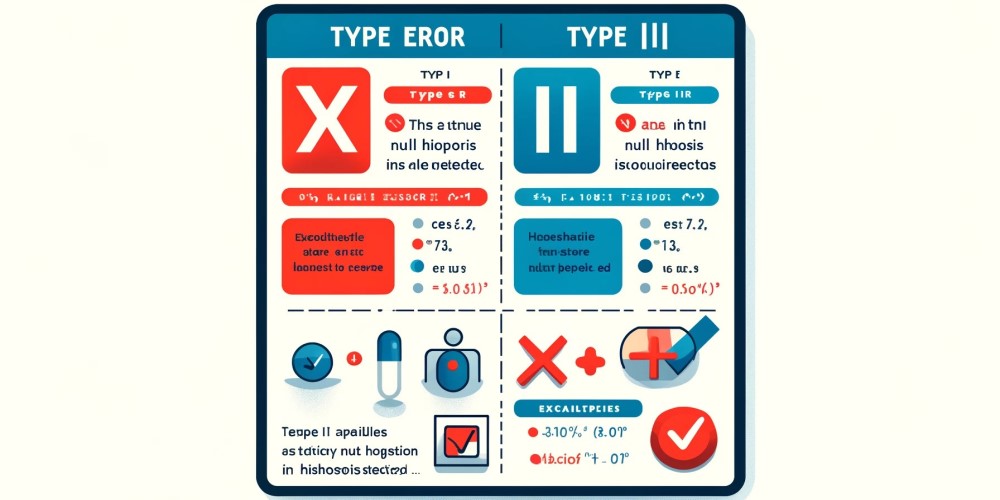Type I error and Type II error are two types of errors that can occur in statistical hypothesis testing, particularly when interpreting p-values.
Type I Error (False Positive):
- Definition: Type I error occurs when the null hypothesis (H0) is incorrectly rejected when it is actually true. In other words, it represents the situation where the test concludes that there is a significant effect or difference when there is no true effect or difference in the population.
- Example: Suppose a clinical trial is testing a new drug, and the null hypothesis is that the drug has no effect on patients. If the trial erroneously concludes that the drug is effective (rejects the null hypothesis) when it actually isn’t, this would be a Type I error.
- Probability: The probability of Type I error is denoted by α (alpha), which is the significance level chosen for the hypothesis test. Commonly used significance levels include α = 0.05, α = 0.01, etc.
Type II Error (False Negative):
- Definition: Type II error occurs when the null hypothesis (H0) is incorrectly accepted when it is actually false. In other words, it represents the situation where the test fails to detect a significant effect or difference when there is a true effect or difference in the population.
- Example: Using the same clinical trial scenario, if the trial fails to detect the effectiveness of the drug (fails to reject the null hypothesis) when the drug does have a real effect on patients, this would be a Type II error.
- Probability: The probability of Type II error is denoted by β (beta). It is influenced by factors such as the sample size, effect size, and chosen significance level. The power of a statistical test (1 – β) represents the probability of correctly rejecting a false null hypothesis.
In hypothesis testing, there is often a trade-off between Type I and Type II errors. For example, by decreasing the likelihood of Type I error (making the test more conservative), the probability of Type II error may increase, and vice versa. Researchers must carefully consider the consequences of both types of errors when designing experiments and interpreting statistical results.
